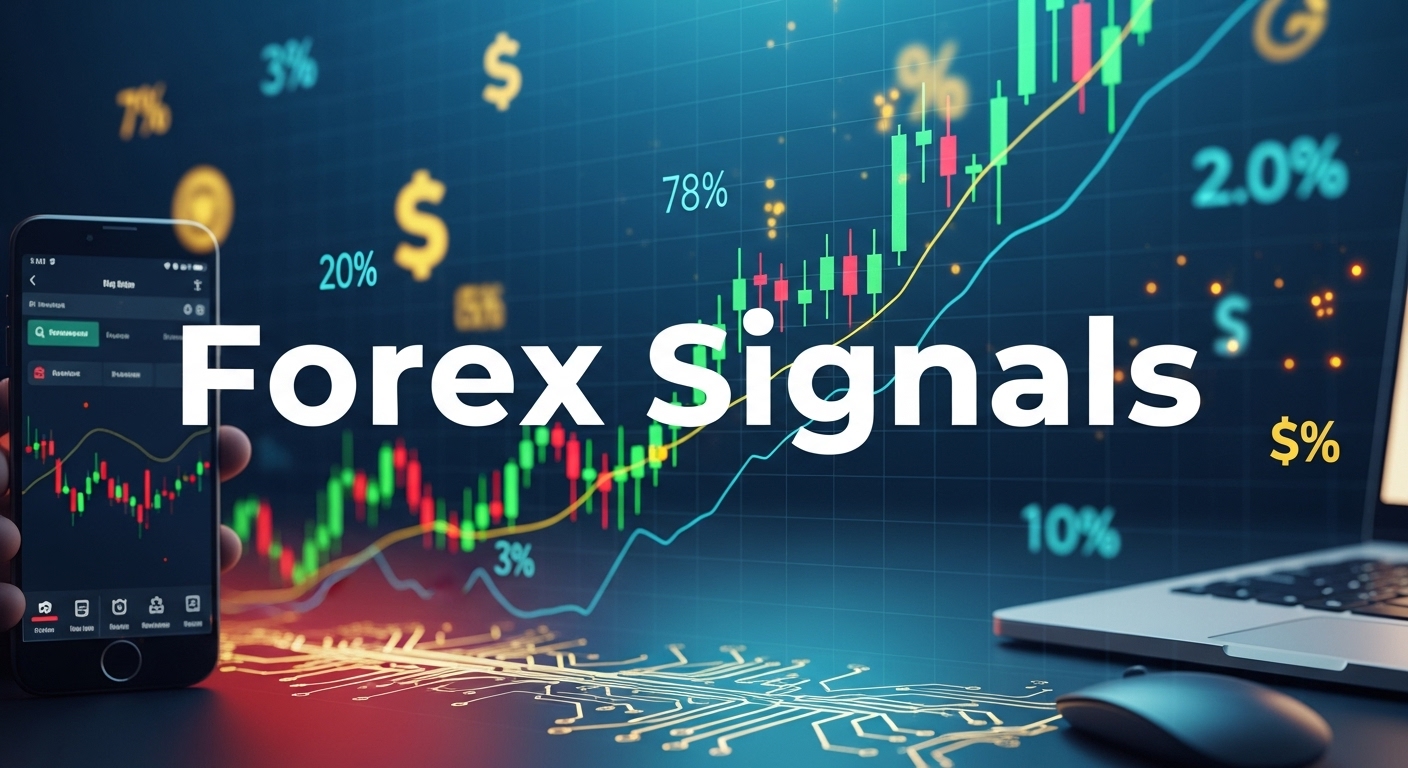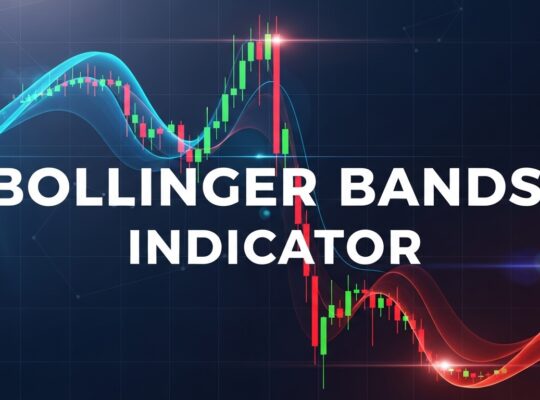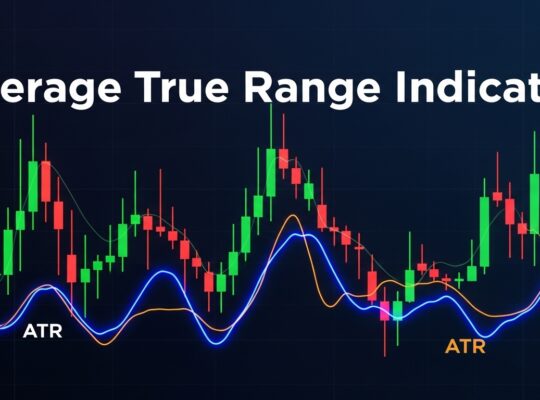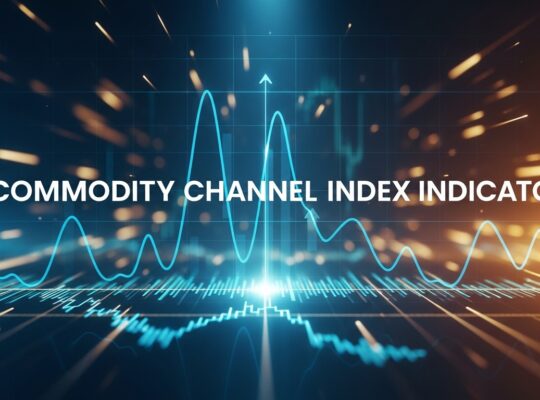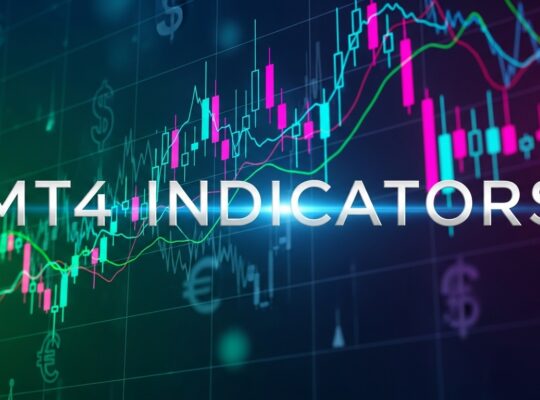Forex signals have revolutionized how both novice and experienced traders approach currency trading. Whether you’re a busy professional who can’t monitor the markets 24/7 or a beginner looking to learn from seasoned professionals, understanding forex signals could be the key to unlocking your trading potential. In this comprehensive guide, we’ll explore everything you need to know about forex signals, from their basic mechanics to choosing the right providers and using them effectively in your trading strategy.
What Are Forex Signals?
At its core, a forex signal is like having a GPS for your trading journey. Just as GPS provides turn-by-turn directions to reach your destination, forex signals offer specific trading recommendations to help you navigate the complex currency markets. These signals are essentially trade suggestions generated by professional analysts or sophisticated algorithms, designed to identify potentially profitable trading opportunities in the foreign exchange market.
Think of forex signals as carefully crafted recommendations that include all the essential information you need to execute a trade. A typical signal will specify which currency pair to trade, whether to buy or sell, the exact entry price, stop-loss levels to limit potential losses, and take-profit targets to secure gains. For instance, a signal might read: “Buy EUR/USD at 1.0850, Stop Loss at 1.0820, Take Profit at 1.0920.” This concise package contains everything needed to potentially capitalize on a market movement.
The beauty of forex signals lies in their ability to democratize professional-level market analysis. Instead of spending years developing expertise in technical analysis, fundamental research, and market sentiment interpretation, traders can access the insights of experienced professionals or sophisticated trading algorithms. This levels the playing field, allowing traders with limited experience or time to participate more effectively in the forex market.
Modern forex signals go beyond simple buy and sell recommendations. They often include market context, explaining the reasoning behind the trade setup, risk management guidelines, and even educational content to help traders understand the underlying market dynamics. This comprehensive approach transforms signals from mere trading tips into valuable learning opportunities that can enhance your overall trading knowledge.
How Do Forex Signals Work?
The magic behind forex signals begins with rigorous market analysis conducted by professional traders or advanced algorithmic systems. Professional signal providers typically employ teams of experienced analysts who monitor global economic events, technical chart patterns, and market sentiment around the clock. These experts combine multiple analysis techniques, including studying price action, identifying support and resistance levels, analyzing economic indicators, and interpreting central bank policies to identify high-probability trading setups.
On the algorithmic side, sophisticated computer programs scan vast amounts of market data, historical patterns, and real-time price movements to identify trading opportunities. These systems can process information at speeds impossible for human traders, analyzing multiple currency pairs simultaneously and identifying subtle patterns that might escape manual analysis. The algorithms incorporate machine learning capabilities, continuously refining their analysis based on market outcomes and changing conditions.
Once a potential trading opportunity is identified, the signal must be delivered to subscribers quickly and efficiently. Modern signal providers utilize multiple delivery channels to ensure traders receive timely notifications. Mobile applications with push notifications have become increasingly popular, allowing traders to receive alerts instantly regardless of their location. Email remains a reliable backup method, while SMS notifications ensure signals reach traders even in areas with limited internet connectivity.
Telegram channels and other social media platforms have emerged as popular signal distribution methods, particularly for their ability to create communities around trading strategies. Some advanced platforms integrate directly with popular trading software, allowing for seamless signal delivery and even automated execution. The key is speed and reliability, as forex markets move rapidly, and delayed signals can mean missed opportunities or altered risk-reward ratios.

The execution timeline for forex signals varies depending on the trading strategy and market conditions. Scalping signals might require immediate action within minutes of delivery, while swing trading signals may remain valid for hours or even days. Understanding these timeframes is crucial for signal users, as acting on outdated signals can lead to poor trading outcomes. Market hours also play a significant role, with signals during major trading sessions typically offering better liquidity and execution conditions.
Types of Forex Signal Providers
The forex signals landscape offers diverse options catering to different trader preferences, experience levels, and budget constraints. Understanding these different provider types will help you make informed decisions about which approach best suits your trading goals and circumstances.

Free forex signal providers represent the entry point for many traders exploring signal-based trading. These services typically generate revenue through advertising, affiliate partnerships, or by using free signals as lead magnets for premium services. Social media platforms, trading forums, and YouTube channels often host free signal providers who share their market analysis and trade recommendations with followers. While the price is certainly attractive, free signals come with inherent limitations. The quality can be inconsistent, as providers may not have the same accountability standards as paid services. Additionally, free signal providers might not offer comprehensive risk management guidance or detailed market analysis, leaving traders to make critical decisions about position sizing and trade management on their own.
Premium forex signal services operate on subscription models, charging monthly or yearly fees in exchange for professional-grade market analysis and trade recommendations. These services typically employ experienced traders and analysts who dedicate their full attention to market research and signal generation. Paid providers often offer additional benefits such as detailed market commentary, risk management guidance, customer support, and educational resources. The subscription fees can range from modest monthly amounts to several hundred dollars, depending on the provider’s reputation, track record, and service level. The key advantage of premium services lies in their accountability and professional standards, as providers must consistently deliver value to retain paying subscribers.
Social trading platforms have revolutionized signal delivery by combining community aspects with professional trading insights. Platforms like eToro, ZuluTrade, and similar services allow traders to follow and copy successful traders automatically. This approach differs slightly from traditional signals, as instead of receiving discrete trading recommendations, users can mirror the complete trading activity of chosen professionals. Social trading platforms typically provide detailed statistics about each trader’s performance, including win rates, average returns, risk levels, and trading frequency. This transparency allows signal followers to make informed decisions about which traders to follow and how much capital to allocate to copying their strategies.
Institutional and bank-level signal services represent the premium tier of forex signals, often targeting professional traders and high-net-worth individuals. These services leverage extensive research teams, advanced technology infrastructure, and institutional market access to generate high-quality trading recommendations. While significantly more expensive than retail alternatives, institutional signals often provide superior analysis depth, exclusive market insights, and personalized support. Banks and financial institutions offering these services typically have strict regulatory compliance requirements and professional accountability standards that can provide additional confidence in their recommendations.
Best Forex Signal Providers in 2025
Evaluating forex signal providers requires a systematic approach that considers multiple performance metrics beyond simple profitability claims. The most reliable providers demonstrate transparency through verifiable trading records, consistent performance over extended periods, and clear communication about their trading strategies and risk management approaches.
When assessing potential signal providers, focus on their historical track record and verification methods. Reputable providers will offer independently verified performance statistics, showing not just winning trades but also losses and overall risk-adjusted returns. Look for providers who publish their complete trading history, including drawdown periods and recovery strategies. Be particularly cautious of services claiming unrealistic returns, such as consistent monthly profits exceeding 20-30%, as these claims often indicate unrealistic expectations or potentially fraudulent operations.
Customer support quality serves as another crucial evaluation criterion. Professional signal providers should offer responsive customer service, clear communication channels, and educational resources to help subscribers understand and implement their recommendations effectively. Test their responsiveness by asking questions during trial periods and evaluating the depth and helpfulness of their responses. Providers who invest in customer education and support typically demonstrate commitment to long-term subscriber success rather than short-term profit maximization.
Trial periods and money-back guarantees provide valuable opportunities to evaluate signal quality without significant financial commitment. Legitimate providers confident in their service quality will offer reasonable trial periods, allowing potential subscribers to assess signal accuracy, delivery reliability, and overall service quality. During trial periods, pay attention to signal frequency, win rates, risk-reward ratios, and how well the signals align with your trading schedule and risk tolerance.

Price consideration should balance cost against value provided. While expensive doesn’t necessarily mean better, extremely cheap services might indicate corners being cut in research quality or customer support. Evaluate the total value package, including signal quality, educational resources, customer support, and additional tools or analysis provided. Some providers offer different subscription tiers, allowing traders to choose service levels that match their needs and budgets.
Red flags to avoid include providers making guaranteed profit claims, refusing to provide historical performance data, pressuring potential subscribers with limited-time offers, or requiring large upfront payments. Legitimate forex signal providers understand that trading involves inherent risks and will be transparent about potential losses alongside potential gains. They will also provide clear terms of service and maintain professional communication standards.
How to Choose the Right Forex Signals
Selecting appropriate forex signals requires honest self-assessment of your trading objectives, available time, risk tolerance, and experience level. Your trading style significantly impacts which signals will work best for your situation. Scalpers who prefer quick, frequent trades need signals that provide immediate entry opportunities with short-term profit targets, while swing traders can utilize signals with longer timeframes and larger profit potential.
Consider your availability for signal execution carefully. Some signal providers send multiple recommendations daily, requiring active monitoring and quick responses. If your schedule doesn’t allow for constant market monitoring, look for providers offering longer-term signals or services that clearly specify how long signals remain valid. Additionally, consider time zone differences between signal providers and your location, as this can impact your ability to execute trades at optimal entry points.
Risk tolerance assessment helps determine appropriate signal providers and position sizing strategies. Conservative traders should seek providers with lower win rates but better risk-reward ratios and smaller typical drawdowns. More aggressive traders might prefer services with higher potential returns, understanding that this typically comes with increased volatility and larger potential losses. Be honest about your emotional capacity to handle losing streaks, as even the best signal providers will experience periods of poor performance.
Your current knowledge level should influence your provider selection process. Beginners benefit from educational signal services that explain their reasoning and provide learning opportunities alongside trading recommendations. These services often include market commentary, analysis explanations, and gradual skill-building components. Experienced traders might prefer concise, action-oriented signals that allow them to apply their own analysis and risk management techniques.
Financial considerations extend beyond subscription costs to include trading capital requirements and broker compatibility. Some signal providers recommend position sizes that may not suit smaller account balances, while others focus specifically on strategies appropriate for different capital levels. Ensure your chosen broker supports the currency pairs and trading conditions recommended by your signal provider, as execution quality can significantly impact signal profitability.
How to Use Forex Signals Effectively
Successful forex signal implementation requires more than simply copying trade recommendations. Developing a systematic approach to signal execution, risk management, and continuous evaluation will significantly improve your long-term results and help you build sustainable trading skills.
Position sizing represents perhaps the most critical aspect of effective signal usage. Never risk more than a small percentage of your account balance on any single signal, regardless of how confident the provider appears. Professional traders typically risk between 1-3% of their account per trade, and signal followers should adopt similar conservative approaches. Calculate position sizes based on your account balance and the signal’s stop-loss distance, ensuring that potential losses remain within your predetermined risk limits.
Risk management extends beyond individual trade sizing to encompass overall portfolio protection strategies. Avoid placing multiple correlated trades simultaneously, as this concentrates risk and can amplify losses during adverse market conditions. For example, if you’re already long EUR/USD based on a signal, be cautious about additional signals recommending long positions in correlated pairs like GBP/USD or AUD/USD. Diversification across different currency pairs and time frames can help smooth your equity curve and reduce overall portfolio volatility.

Trade execution timing significantly impacts signal profitability. Markets move quickly, and delayed execution can transform profitable signals into losing trades. Set up reliable notification systems and ensure you can access your trading platform quickly when signals arrive. However, avoid rushing into trades without verifying that current market conditions align with the signal’s assumptions. If market conditions have changed significantly since the signal was issued, consider skipping the trade rather than executing under suboptimal conditions.
Combining signals with your own market analysis creates a more robust trading approach than blindly following recommendations. Use signals as starting points for your own research, confirming that you understand and agree with the underlying analysis. This approach helps develop your trading skills while potentially improving signal profitability through additional confirmation. However, avoid over-analyzing signals to the point of missing entry opportunities, as excessive second-guessing can negate the benefits of professional analysis.
Keep detailed records of your signal trading results, tracking not only profits and losses but also execution quality, emotional responses, and lessons learned. This documentation helps identify patterns in your trading performance and areas for improvement. Regular review of your signal trading results will reveal which providers and signal types work best for your specific situation and help refine your approach over time.
Pros and Cons of Using Forex Signals
Forex signals offer compelling advantages that explain their popularity among traders of all experience levels. The primary benefit lies in time savings, particularly valuable for traders who cannot dedicate hours daily to market analysis. Professional signal providers essentially act as your personal research team, monitoring global markets, analyzing economic events, and identifying trading opportunities while you focus on other responsibilities. This efficiency allows part-time traders to participate more actively in forex markets without sacrificing their primary occupations or personal commitments.
Educational value represents another significant advantage of quality forex signals. Reputable providers often include detailed explanations of their analysis, helping subscribers understand market dynamics and trading concepts. Over time, this educational component can accelerate your learning curve and help develop independent trading skills. Many traders use signals as training wheels while building their own analytical capabilities, gradually reducing their dependence on external recommendations as their expertise grows.
Access to professional-level analysis levels the playing field between retail traders and institutional participants. Individual traders rarely have access to the research resources, market contacts, and analytical tools available to professional trading firms. Quality signal services bridge this gap, providing retail traders with insights and opportunities that would otherwise require substantial investments in research infrastructure and expertise development.
However, forex signals also present notable disadvantages that traders must consider carefully. Dependency risk represents perhaps the most significant concern, as relying heavily on external signals can prevent the development of personal trading skills. Traders who become overly dependent on signals may struggle to make independent decisions when signals are unavailable or when market conditions require rapid adaptation. This dependency can also create emotional challenges when signal performance deteriorates, as traders lack the personal analysis skills to evaluate whether poor performance represents temporary setbacks or fundamental problems with the signal provider’s approach.
Cost considerations extend beyond subscription fees to include opportunity costs and potential overtrading expenses. Premium signal services can represent significant ongoing expenses, particularly for traders with smaller account balances. Additionally, some signal providers generate frequent recommendations that can lead to overtrading and increased transaction costs. Calculate the total cost of signal usage, including subscriptions, spreads, commissions, and potential slippage, to ensure that signal-based trading remains economically viable for your account size.
Signal delays and execution challenges can significantly impact profitability, particularly in fast-moving market conditions. Even brief delays between signal generation and delivery can alter risk-reward ratios or eliminate opportunities entirely. Technical issues, broker problems, or simply being unavailable when signals arrive can transform potentially profitable recommendations into missed opportunities or poorly executed trades.
Realistic expectations about signal performance help avoid disappointment and poor decision-making. Even the best signal providers experience losing streaks, and typical win rates in professional trading rarely exceed 60-70%. Understanding that losses are inherent parts of trading helps maintain emotional stability and prevents knee-jerk reactions to temporary setbacks. Successful signal usage requires patience, discipline, and acceptance that consistent profitability develops over time rather than through individual trade successes.
Creating Your Own Forex Signals
Developing personal signal generation capabilities represents the ultimate goal for many traders, providing independence from external services while building valuable analytical skills. Creating reliable forex signals requires mastering multiple analysis techniques and developing systematic approaches to opportunity identification and risk assessment.
Technical analysis forms the foundation of most successful signal generation strategies. Begin by mastering fundamental chart reading skills, including identification of support and resistance levels, trend analysis, and basic chart patterns. Moving averages, relative strength indicators, and momentum oscillators provide valuable insights into market direction and potential reversal points. However, avoid the common mistake of over-complicating analysis with excessive indicators, as simple, well-understood tools often produce better results than complex systems with numerous variables.
Understanding price action represents perhaps the most valuable technical skill for signal generation. Price action analysis focuses on reading market sentiment and institutional behavior through pure price movements, without relying on derived indicators. Learn to identify key levels where institutions typically place orders, recognize rejection patterns at significant price levels, and understand how market structure changes signal shifts in underlying sentiment. This approach provides deeper insights into market mechanics and often produces more reliable signals than indicator-based systems alone.
Fundamental analysis adds crucial context to technical signals, helping identify high-probability setups and avoid trades conflicting with major economic themes. Economic calendar events, central bank communications, and geopolitical developments all influence currency movements and can validate or contradict technical analysis conclusions. Develop systematic approaches to evaluating economic data releases, understanding their typical market impacts, and adjusting technical analysis accordingly. For example, strong technical buy signals might be avoided if major economic releases are expected to create downward pressure on the currency pair.
Risk assessment and position sizing calculations represent critical components of effective signal generation. Every signal should include clear stop-loss levels based on technical or fundamental analysis, realistic profit targets that consider historical volatility and market structure, and position sizing recommendations appropriate for different account sizes. Develop systematic methods for calculating these parameters, ensuring consistency in your risk management approach across different market conditions and currency pairs.
Signal testing and validation help refine your analysis techniques and improve long-term performance. Maintain detailed records of your signal generation process, tracking not only outcomes but also the reasoning behind each recommendation. Regular review of your signals helps identify strengths and weaknesses in your analysis, allowing continuous improvement of your methodology. Consider paper trading new signal ideas before risking real capital, particularly when experimenting with new analysis techniques or market approaches.
Technology tools can significantly enhance your signal generation capabilities. Professional charting software provides advanced analysis tools and customization options that exceed basic broker platforms. Economic calendars and news feeds help maintain awareness of fundamental developments, while backtesting software allows historical evaluation of your signal methodologies. However, remember that tools are only as good as the skills of their users, and focus on developing solid analytical foundations before investing heavily in advanced software.
Regulatory and Safety Considerations
The regulatory landscape surrounding forex signals varies significantly across different jurisdictions, creating important considerations for both signal providers and users. Understanding these regulatory frameworks helps protect traders from fraudulent services while ensuring compliance with local financial regulations.
In the United States, forex signal providers operating as investment advisors must register with the Securities and Exchange Commission or relevant state authorities. However, many signal providers operate in regulatory gray areas, positioning themselves as educational services rather than investment advisors to avoid registration requirements. This regulatory ambiguity means that U.S. traders should exercise particular caution when selecting signal providers, focusing on transparency, verifiable track records, and clear service terms.
European regulations under MiFID II provide more comprehensive oversight of financial services, including forex signals that qualify as investment advice. Authorized signal providers in EU countries must meet strict capital requirements, professional standards, and client protection measures. This regulatory framework generally provides better consumer protection but may limit service options or increase costs. Traders in EU jurisdictions benefit from clearer regulatory protections but should still verify that their chosen providers maintain proper authorizations.
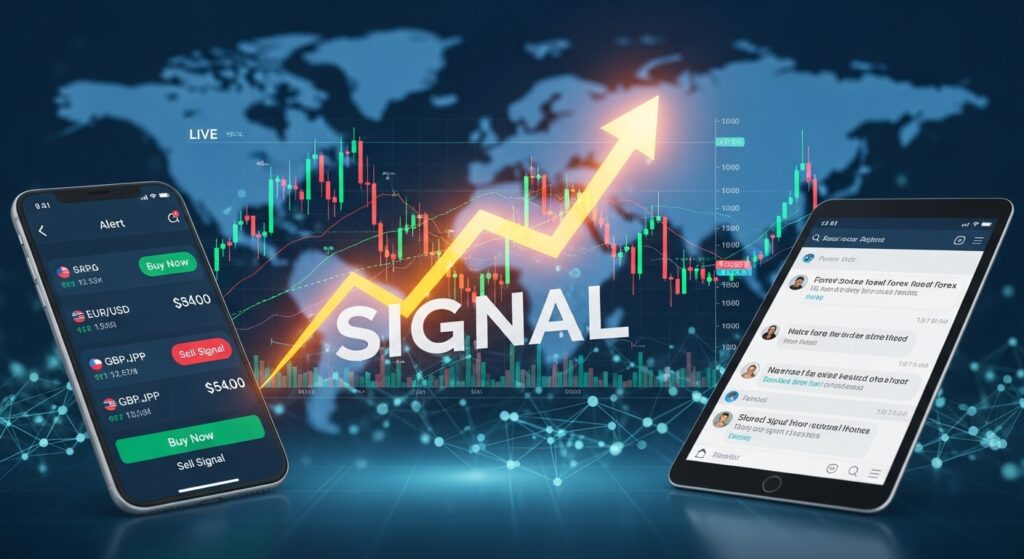
Protecting yourself from fraudulent signal services requires vigilance and systematic due diligence. Research potential providers thoroughly, seeking independent verification of their claimed track records and professional credentials. Be particularly cautious of services making guaranteed return promises, requesting large upfront payments, or pressuring potential subscribers with limited-time offers. Legitimate providers understand that forex trading involves inherent risks and will be transparent about potential losses alongside potential gains.
Payment security represents another crucial safety consideration. Use secure payment methods that provide dispute resolution mechanisms, avoiding providers that only accept cryptocurrency, wire transfers, or other irreversible payment methods. Credit card payments typically offer better fraud protection and chargeback capabilities if services prove fraudulent or unsatisfactory. Read service terms carefully, particularly regarding refund policies and subscription cancellation procedures.
Data protection concerns have grown increasingly important as signal providers collect personal and financial information from subscribers. Ensure that your chosen providers maintain appropriate data security measures and clear privacy policies. Be cautious about sharing detailed account information or providing trading platform access to third parties, as this information could be misused or compromised in data breaches.
The Future of Forex Signals
Technological advancement continues reshaping the forex signals landscape, with artificial intelligence and machine learning leading the transformation. Modern AI systems can process vast amounts of market data, news events, and historical patterns to identify trading opportunities that might escape human analysis. These systems continuously learn from market outcomes, refining their analysis techniques and adapting to changing market conditions. As AI technology improves, expect signal accuracy and consistency to increase while costs potentially decrease due to automation efficiencies.
Social trading integration represents another significant trend, blending community aspects with professional signal services. Platforms increasingly allow traders to see not only signals but also the complete trading activity and performance statistics of signal providers. This transparency enables more informed decision-making about which providers to follow and how to allocate capital across different signal sources. Community features allow subscribers to discuss signals, share experiences, and learn from each other’s successes and mistakes.
Mobile technology improvements continue enhancing signal delivery and execution capabilities. Advanced mobile applications now offer sophisticated analysis tools, integrated news feeds, and seamless broker integration for immediate signal execution. Push notification systems have become more intelligent, allowing personalized filtering based on user preferences, risk tolerance, and available trading capital. As mobile technology advances, expect even more seamless integration between signal receipt and trade execution.
Regulatory development trends suggest increasing oversight of forex signal services, particularly regarding consumer protection and service transparency. This regulatory evolution should ultimately benefit traders through improved service standards, better dispute resolution mechanisms, and reduced fraud risk. However, increased regulation may also lead to higher service costs and reduced availability of certain signal types or providers.
The integration of blockchain technology and cryptocurrencies presents interesting possibilities for signal services, including transparent performance recording, automated payment systems, and decentralized signal generation networks. While still in early stages, these technologies could eventually provide more trustworthy performance verification and innovative service delivery methods.
Conclusion
Forex signals represent powerful tools that can enhance your trading performance, accelerate your learning curve, and provide access to professional-level market analysis. However, like any trading tool, their effectiveness depends largely on how skillfully you implement them within a comprehensive trading strategy. The key to successful signal usage lies not in finding the perfect signal provider, but in developing systematic approaches to signal evaluation, risk management, and continuous learning.
Remember that forex signals work best when combined with your own market understanding and disciplined risk management practices. Use them as educational opportunities to develop your analytical skills rather than crutches that prevent skill development. Whether you choose free services to start your signal journey, invest in premium providers for professional-grade analysis, or eventually develop your own signal generation capabilities, maintain realistic expectations and focus on long-term consistent performance rather than short-term profits.
The forex market will continue evolving, and successful traders adapt their approaches accordingly. Stay informed about technological developments, regulatory changes, and emerging signal providers that might enhance your trading capabilities. Most importantly, never risk more than you can afford to lose, and remember that even the best forex signals cannot eliminate the inherent risks of currency trading. Take action today by researching reputable signal providers, starting with free trials to evaluate different approaches, and beginning your journey toward more informed and potentially profitable forex trading. Your future self will thank you for the time and effort you invest in understanding this powerful trading tool.
Frequently Asked Questions
Are forex signals profitable?
Forex signals can be profitable when used correctly, but profitability depends on multiple factors including signal quality, proper risk management, and consistent execution. Professional signal providers typically achieve win rates between 50-70%, with successful users focusing on long-term performance rather than individual trade outcomes. Remember that all forex trading involves risk, and past performance doesn’t guarantee future results. The key to profitability lies in choosing reputable providers, implementing proper position sizing, and maintaining disciplined trading practices over extended periods.
How much do forex signals cost?
Forex signal costs vary widely depending on the provider and service level. Free signals are available through social media and trading forums, though quality can be inconsistent. Premium services typically range from $30-300 monthly, with professional-grade institutional services potentially costing significantly more. When evaluating costs, consider the total value package including signal quality, educational content, customer support, and additional analysis tools. Remember that expensive doesn’t necessarily mean better, and the best value often comes from services that match your specific trading style and experience level.
Can beginners use forex signals?
Beginners can definitely use forex signals, and they often provide excellent learning opportunities for new traders. However, beginners should start with educational signal services that explain their analysis and provide market commentary alongside trade recommendations. Focus on understanding the reasoning behind each signal rather than blindly copying trades. Start with small position sizes while learning proper risk management techniques, and gradually increase involvement as your understanding improves. Consider signals as training tools that supplement formal forex education rather than shortcuts to instant trading success.
What’s the difference between free and paid forex signals?
Free forex signals typically offer basic trade recommendations without comprehensive analysis or customer support, often serving as marketing tools for premium services. Quality can be inconsistent since free providers may lack accountability standards of paid services. Paid signals generally provide more detailed analysis, better customer support, verified track records, and additional educational resources. Premium services also tend to offer more reliable delivery systems and risk management guidance. However, price doesn’t guarantee quality, so evaluate both free and paid options based on transparency, track record, and alignment with your trading goals.
How fast do I need to act on forex signals?
Signal timing depends on the trading strategy and market conditions involved. Scalping signals typically require immediate action within minutes of delivery, while swing trading signals may remain valid for hours or days. Most reputable signal providers specify validity timeframes and urgency levels for their recommendations. Set up reliable notification systems to receive signals quickly, but avoid rushing into trades without verifying current market conditions. If you cannot act immediately on time-sensitive signals due to schedule constraints, consider providers offering longer-term trade recommendations that better match your availability.



